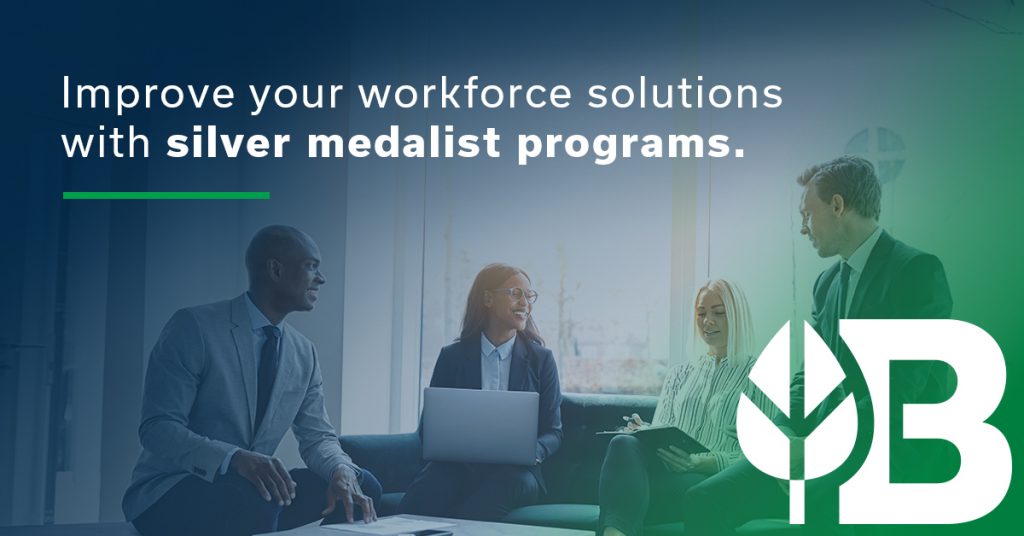
Streamline Your Hiring Process with Silver Medalist Programs
Kelly Reed, Business Solutions Designer at Broadleaf Results
Despite the cancellation of the 2020 Summer Olympics, silver medalists are still top-of-mind for our team at Broadleaf. No, we’re not talking about world-class athletes – we’re talking about leading workforce solutions programs!
In what has become an increasingly popular recruiting tactic in recent years, silver medalist programs present an effective way for companies to revisit former candidates for vacant positions. Although silver medalist initiatives have historically been underutilized, they offer tremendous potential for any organization – regardless of headcount size or hiring needs.
The crux of a silver medalist program is simple: organizations decide to revisit candidates that they once considered hiring, but ultimately passed over. Because these resources have previously been screened, vetted, and interviewed, key hiring stakeholders within the company will possess a keen understanding of the individual’s qualifications and background. With this valuable information at their disposal, this will significantly shorten – and streamline – the recruiting and hiring process for all parties involved.
Here are some key items to consider when formulating your silver medalist program:
Track candidates with your technology
Through the utilization of an ATS or VMS platform, companies will be able to keep tabs on highly-regarded candidates that they had once interviewed. These recruiting technologies are crucial for the success of TA leaders and hiring managers as they look to identify landing spots for these individuals. If internal needs arise within your organization, you’ll be able to call upon these prospective candidates in an attempt to attract them back to your company.
Describe your approach in detail
Establishing a clear, fully-defined communication plan is pivotal before engaging with your silver medalists. Companies should make an effort to quickly gain an understanding of the candidate’s interests within the organization while providing information on potential next steps and expectations. Just as communication with the candidate is critical, it’s also important to make sure your internal team is cognizant of the process when communicating with this individual. Be sure to convey to your key hiring decision-makers that these silver medalists should not be considered “rejects,” but rather candidates who may have been mistakenly overlooked in the recruiting process.
Stay engaged!
It’s one thing to tag or flag a resource as a silver medalist and keep them on your organization’s radar for future needs. But this “tagging” and “flagging” means nothing without acting on your plans. After reaching out to the candidate, provide your reasoning to allow the individual to understand the “why” behind your desire to potentially add them to your team. As your organization had once decided not to hire the resource, explain the circumstances that have changed while enticing them with your organization’s long-term potential. Showcase opportunities that will enhance the candidate’s personal and professional growth. But always be sure to remember – communication is a two-way street. Once you begin to engage with the individual, be deliberate in your conversations with the candidate. Don’t waste anyone’s time with a halfhearted commitment!
If your organization is looking to speed up fulfillment while reducing average time-to-fill and cost-per-hire, a silver medalist program may present the perfect solution. Give our team at Broadleaf a call to learn how we can help your company to implement a program of its own.
Looking to get in contact with Kelly? Connect with her on LinkedIn.
For more innovative workforce solutions ideas, be sure to follow our Broadleaf blog.




